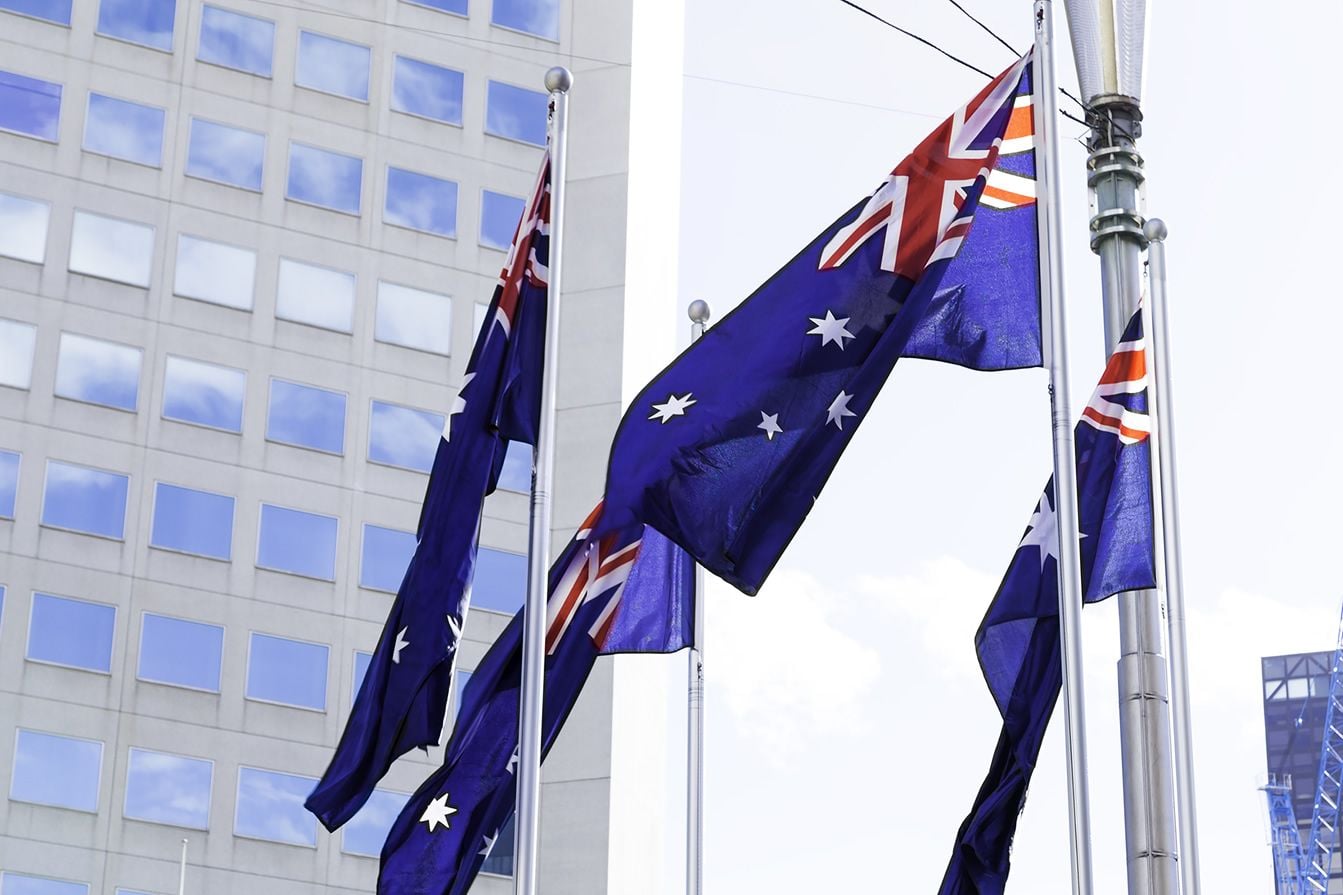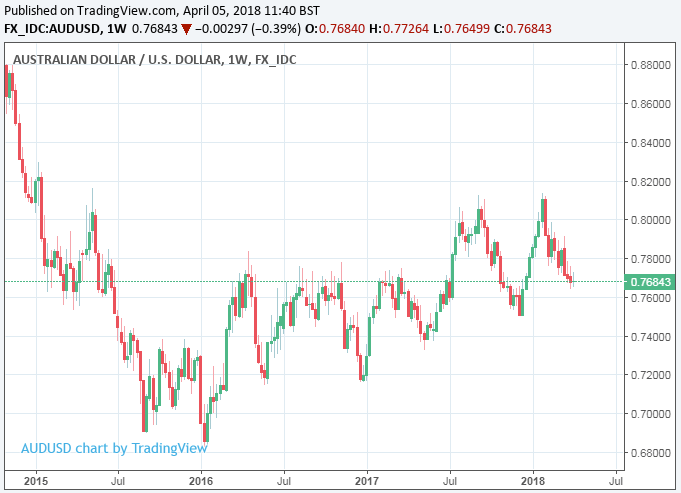The Australian Dollar is a Buy say Maybank Strategists
- Written by: James Skinner
-
- Iron ore rout and slower economy already in Australian Dollar price.
- Market too pessimistic on interest rates now wages have "troughed".
- AUD/USD presents a "tactical opportunity" for traders.

© Filipe Frazao, Adobe Stock
The Australian Dollar has remained under pressure in the first week of April, although one Singapore-based strategist believes an end to the under-performance is nigh and is suggesting now could be the time to bet on a rise against the US Dollar.
Australia’s currency has fallen nearly 2% against the US greenback so far in 2018 and is down more than 5% from the highs it briefly saw in January, but strategists at Asia-focussed lender Maybank say the months ahead will be more kind to the Antipodean currency.
"We warn that bullish moves might take this pair towards the 0.79-figure. Our mildly bullish medium-term view for AUD remains, as domestic and external demand continues to strengthen and we look for the AUDUSD pair to break above 0.80 within this half of the year," says Saktiandi Supaat, an FX strategist at Maybank.
Supaat forecasts a steady recovery that sees the Australian Dollar edge incrementally higher against its North American rival in each quarter until the end of 2018. This call is based on the idea that much of the bad news surrounding Australia is already factored into the price of the currency and that the Reserve Bank of Australia will raise its interest rate sooner than markets give it credit for.
“The drop in iron ore prices has soured the outlook for the economy and bull flattened the sovereign yield curve,” Supaat says. ”We see it likely already in the price of AUD and the recent improvement in the China PMI-mfg numbers could see AUD move higher.”
Prices of iron ore futures traded on China’s Dalian Commodity Exchange have fallen by 22% since the start of the year, to trade at CNY 436.9 on April 05, due largely to a decline in Chinese demand for the raw material. This has to do with government led efforts to reduce pollution and curb oversupply in the steel manufacturing sector, although an increasingly uncertain outlook for global trade may also have been a factor in the sell-off.
Despite the apparent demise of iron ore bulls, and a similar collapse seen back in 2017, the Australian Dollar remains in a long term uptrend against the US greenback. This upturn endured throughout the multi-year commodity downturn that ended in 2016 and has even survived a generational shift in bond market yield dynamics that mean international capital flows should now favour the US Dollar.

Above: AUD/USD rate shown at weekly intervals. Captures long term uptrend.
“This pair has broken out of the first falling wedge, a bullish correction is in the works. The 50% retracement of the Jan-Mar fall could bring this pair towards 0.7890. Interim resistance is seen around 0.7760 (23.6%),” adds Supaat.
The Reserve Bank of Australia held its cash rate at a record low of 1.5% for 20 months in April, citing below-target inflation, continuing slack in the labour market and a litany of risks to its outlook for the economy. However, it also noted for a second consecutive time that the rate of wage growth in Australia appears to have bottomed and that it is expected to pick up over the coming quarters.
"We continue to see signs that RBA is poised to hike this Aug after a recent observation by RBA that the “rate of wage growth appears to have troughed”. This is something that we have been observing for the past few months and back our call for RBA to raise cash rate in May (now in Aug)," Supaat says.
Much like their international counterparts, Australian policymakers have repeatedly tied their forecasts for inflation to the outlook for jobs and wage growth, given that both have a powerful influence over demand in the economy and therefore, price pressures.
The fact the RBA now sees wage pressures bottoming out and has suggested twice now that some employers are struggling to find suitable staff, which could lead Australian wages higher if it becomes a trend, suggests an upgrade to the bank's inflation forecasts may not be that far off.
This could quite conceivably lead to an RBA interest rate rise within the 2018 year although market pricing is for the first change in monetary policy to come around the middle of 2019. Any change in market expectations for interest rates could be expected to provide the Australian Dollar with a powerful boost.
“We see tactical opportunity to buy this pair [AUDUSD] at current spot at 0.7690. Target first level at 0.7760 before the next at 0.7830. Stop-loss at 0.7640,” Supaat concludes.
Supaat and Maybank are not the only strategists in the Asia Pacific region looking for a resurgent Australian Dollar this year as the UOB Bank foreign exchange team also forecast the AUD/USD rate will rise to 0.79 before the end of June and that it will finish the year at 0.83. UOB also predicts the Pound-to-Aussie rate will fall by more than 8%, from Tuesday’s level of 1.83, to finish the 2018 year at 1.68.
Advertisement
Get up to 5% more foreign exchange by using a specialist provider to get closer to the real market rate and avoid the gaping spreads charged by your bank when providing currency. Learn more here.










